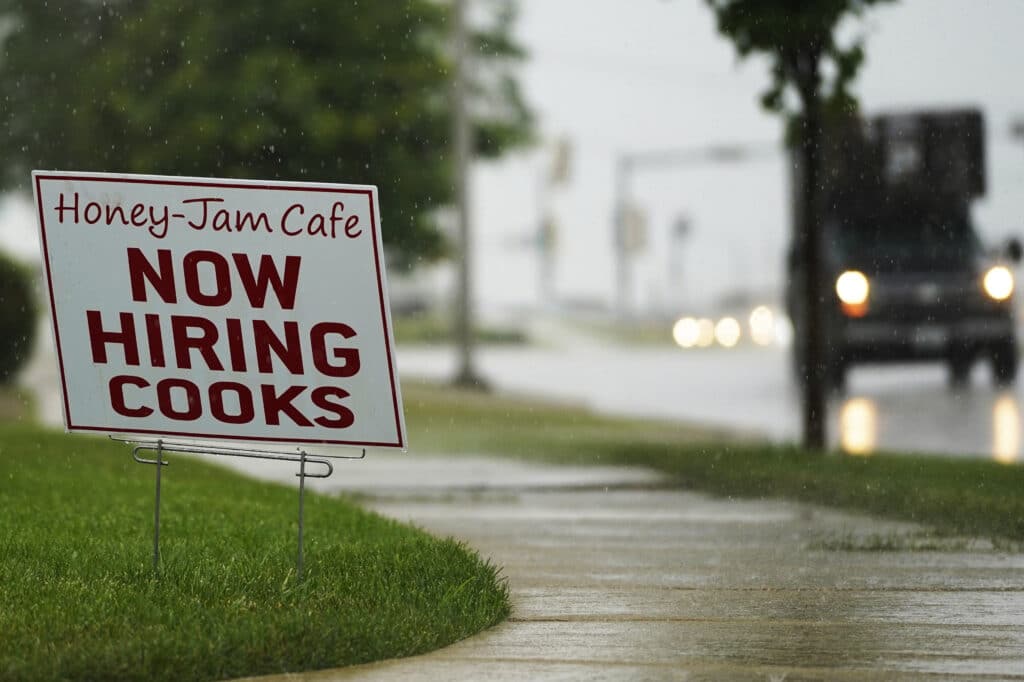U.S. jobless claims/ unemployment benefits/ continuing claims rise/ U.S. labor market/ Federal Reserve interest rates/ U.S. economy soft landing/ Newslooks/ WASHINGTON/ J. Mansour/ Morning Edition/ Applications for U.S. jobless benefits fell by 15,000 to 227,000, below expectations. However, continuing claims rose by 28,000, reaching 1.9 million, the highest level since 2021. This signals potential difficulties in the job market as more people remain on unemployment benefits.
US Jobless Claims Quick Looks:
- Jobless claims drop: Applications for unemployment benefits fell to 227,000 for the week of October 19.
- Continuing claims rise: The number of Americans collecting benefits rose to 1.9 million, the highest since 2021.
- Job market softening: Analysts suggest the labor market is slowing, though no sign of a major collapse yet.
- Federal Reserve response: The Fed cut interest rates to support the job market amid signs of weakening employment data.
- Job growth surprise: U.S. employers added 254,000 jobs in September, showing resilience despite market concerns.
U.S. Unemployment Claims Fall as Continuing Claims Reach 2021 Levels
Deep Look:
U.S. Applications for Jobless Benefits Drop, But Continuing Claims Reach Highest Level Since 2021
The U.S. job market showed mixed signals this week as the number of Americans filing for unemployment benefits dropped, but the total number of people collecting benefits rose to a nearly three-year high. According to the Labor Department’s report on Thursday, initial jobless claims fell by 15,000 to 227,000 for the week of October 19, coming in lower than the 241,000 predicted by analysts. Despite this decline, continuing claims, which track the number of people still receiving unemployment benefits, rose by 28,000 to 1.9 million for the week ending October 12, marking the highest level since November 2021.
Jobless Claims as a Proxy for Layoffs
Weekly jobless claims are often used as a measure of U.S. layoffs and provide a timely snapshot of labor market conditions. The fall in initial claims suggests that the number of layoffs has slowed. However, the rise in continuing claims indicates that more people are struggling to find new employment after losing their jobs, which could point to waning demand for workers despite the broader economic strength.
Economists are closely monitoring these trends, as they may signal shifts in the labor market that could affect broader economic growth. While the increase in continuing claims could be a sign that the job market is softening, it hasn’t yet reached alarming levels.
“The level of continuing claims is rising too, a not-too-alarming sign of a slowing economy, but there is no sign of a crash in employment or a surge of layoffs,” wrote analysts at High Frequency Economics. “The labor market is softening but not imploding.”
Federal Reserve Shifts Focus Amid Softening Labor Market
In response to weakening employment data and declining inflation, the Federal Reserve took a notable step last month, cutting its benchmark interest rate by half a percentage point. This marked the first rate cut in four years, following a series of hikes that began in 2022 to combat soaring inflation. The federal funds rate had reached a two-decade high of 5.3% before the recent reduction.
The Fed’s rate cut reflects a shift in focus from solely fighting inflation to also supporting the labor market, as the central bank attempts to orchestrate a “soft landing”—lowering inflation without triggering a recession. Inflation has gradually fallen closer to the Fed’s target of 2%, and earlier this month, it was reported that U.S. inflation had dropped to its lowest level since February 2021.
Job Market Cooling Amid Rising Rates
The cooling job market is partly attributed to the Fed’s previous interest rate hikes, which were designed to temper inflation but also had the effect of slowing economic growth and reducing demand for workers. Between May and late July of this year, applications for jobless benefits climbed from an average of 213,000 to 250,000, suggesting that higher interest rates were beginning to cool the labor market.
The Labor Department’s August report revealed that the U.S. economy added 818,000 fewer jobs from April 2023 through March 2024 than initially reported. This revision was seen as further evidence of a steadily slowing job market, which prompted the Fed to begin cutting rates.
A Resilient Job Market?
Despite these signs of a softening labor market, there are still reasons for optimism. U.S. employers added 254,000 jobs in September, far exceeding expectations. This robust hiring number alleviated some concerns about the labor market’s potential weakness, suggesting that job creation remains strong enough to sustain economic growth.
While continuing claims are at their highest level since 2021, analysts point out that the four-week average of continuing claims, a more stable indicator that smooths out week-to-week fluctuations, is still consistent with levels seen earlier this summer. As of Thursday’s report, the four-week moving average rose by 2,000 to 238,500.
Overall, while the labor market is showing signs of cooling, particularly with the rise in continuing claims, it has not yet exhibited the kind of steep downturn that might signal a more serious economic slowdown. The U.S. economy appears to be in a delicate balancing act, with inflation coming under control but labor market dynamics shifting as higher interest rates continue to weigh on hiring.







